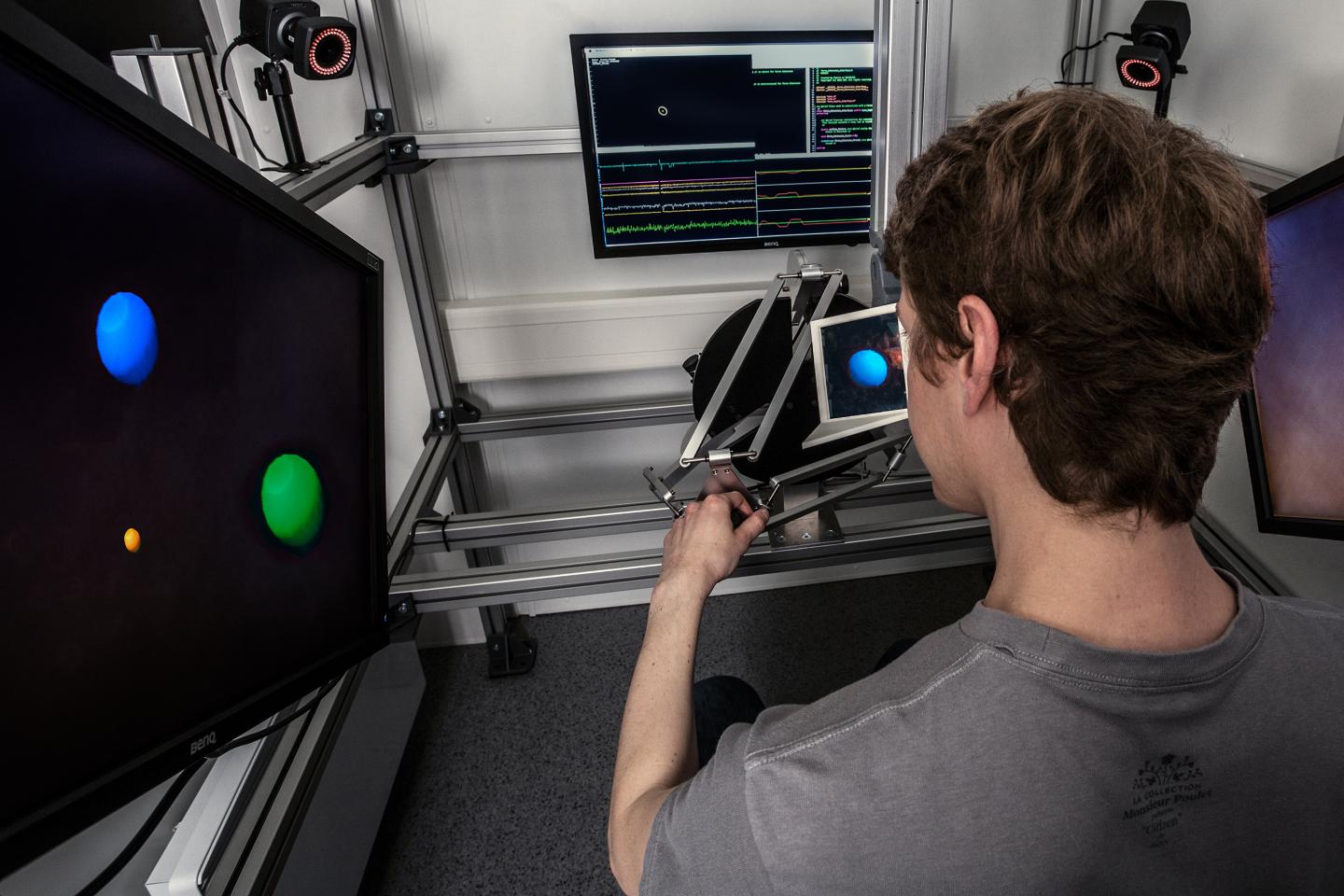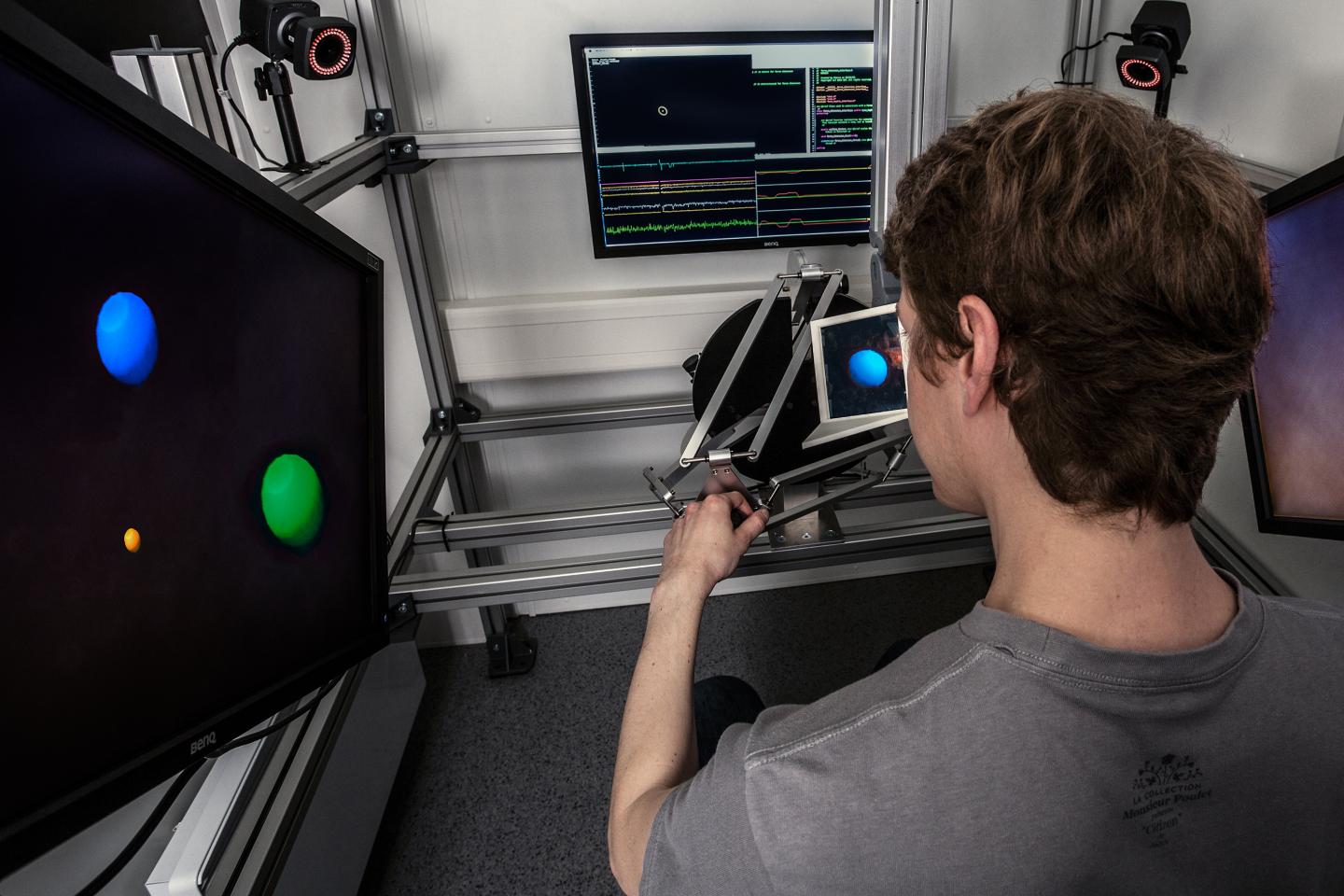
Credit: Thomas Steuer/ Pierre Morel
When choosing between alternative actions, we have to compare the positive outcomes of those actions and weigh them against their costs. Whether a predator hunting prey, a monkey picking fruits, or a human wavering between stairs and elevator, the physical effort associated with executing an action is a relevant cost and hence a decision factor. Understanding how we estimate movement effort is thus necessary to understand how we take decisions.
To study physical effort, human subjects were asked to repeatedly choose between arm movements which differed in amplitude or duration and in force. Not surprisingly, effort increased with the strength of a force resisting the movement. The researchers managed to quantify this dependency precisely, showing that effort was proportional to the square of that strength. Additionally, effort was higher when the movements involved weaker muscles, even for movements that necessitated only little strength. More surprisingly, Morel and colleagues showed that the distance covered by the movements did not determine effort. Instead, effort depended on the duration of the movements, with movements that lasted longer feeling more strenuous than brief movements.
"Our results allow us to estimate action-related costs in decision-making, showing they cannot easily be predicted from energetic expense", says Morel. "More than that, the results also give weight to the idea that action selection in decision-making and in movement execution have common properties and hence might be based on shared mechanisms." When a given action is executed, its goal can typically be achieved in many ways. For example, the multiple joints of the arm provide a large flexibility in how we could conduct reaches to a given target object. Nevertheless, when repeating reaches towards the same target, we tend to execute them in the same optimized way. "We conclude that previously described optimization principles during movement execution seem to also serve as guiding principles during economically motivated conscious choice before movement execution", says Alexander Gail, head of the research group. Understanding how we estimate movement effort is an important step towards understanding how we take decisions.
###
Original publication
Morel P, Ulbrich P, Gail A (2017) What makes a reach movement effortful? Physical effort discounting supports common minimization principles in decision making and motor control. PLoS Biol 15(6): e2001323. https://doi.org/10.1371/journal.pbio.2001323
Media Contact
Dr. Susanne Diederich
[email protected]
49-551-385-1359
http://dpz.eu
Related Journal Article
http://dx.doi.org/10.1371/journal.pbio.2001323
############
Story Source: Materials provided by Scienmag





